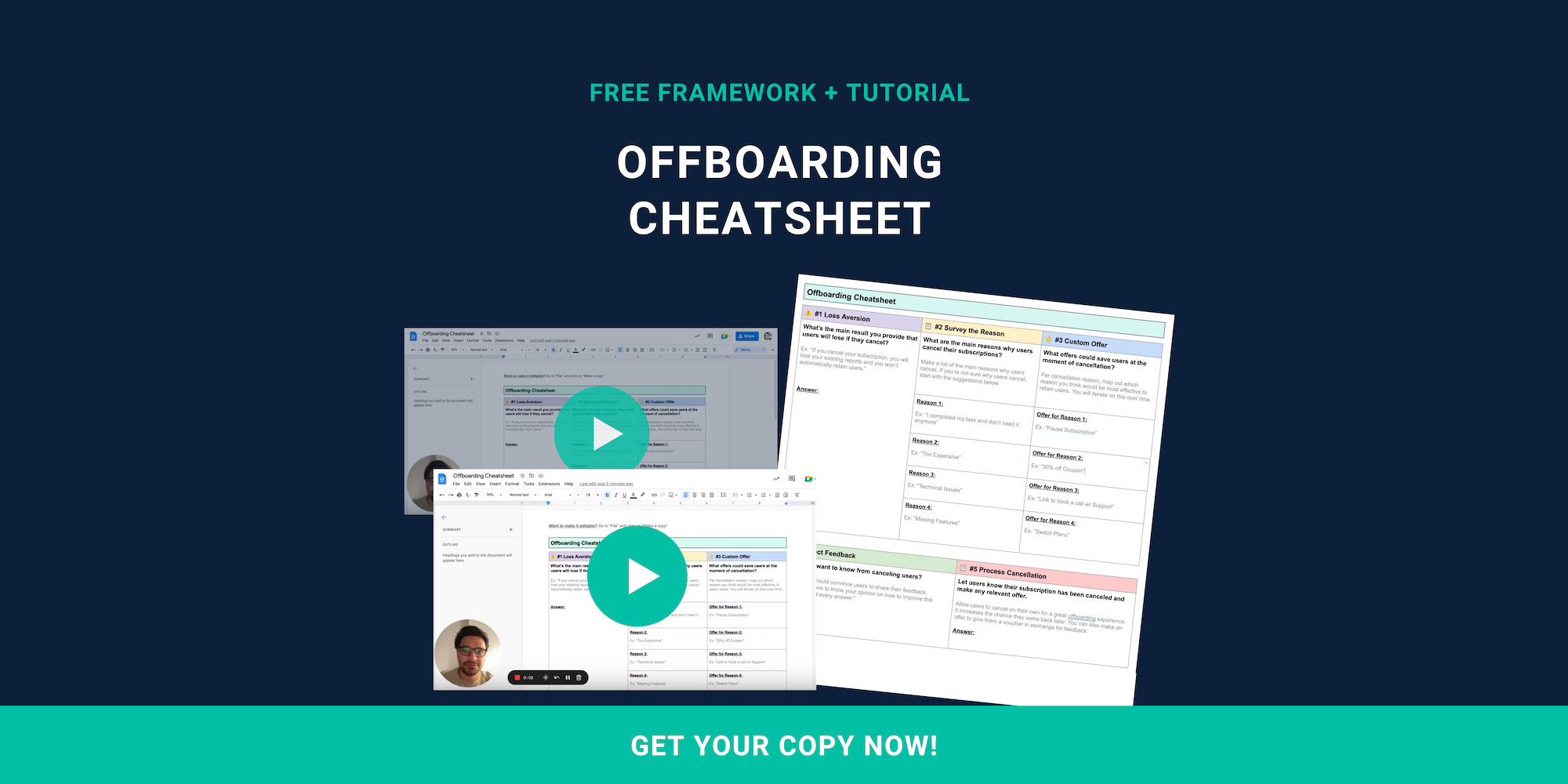Customers cancel subscriptions for all manner of reasons. We’ve narrowed it down to the 6 most common reasons we have found in our own experience, and the experience of other companies that rely on recurring, subscription revenue. Some of these may surprise you.
Churn Problem #1: Non-existent or poor customer service
Nearly 3 out of 4 cancelling customers leave because there is no customer service, or because what the company does have is no good.
At Raaft, we understand that a lean startup customer care department is the same as the CEO’s office: population, one (maybe two). But this doesn’t mean that the young startup cannot cure Churn Problem No.1.
Tip to prevent this...
If you make promises to your customers, or internal goals, such as response time, part of your company’s identity or brand requires sticking to those goals. In other words, keep those promises!
But other times, good customer service means not overpromising. Can you really deliver instant feedback to frustrated users? If you can’t, do not promise it. Manage your client’s expectations.
Churn Problem #2: No quick wins with product
The timeline for a new customer is predictable. There’s excitement when they first agree to pay actual money for a product that promises a solution to their real problem.
Customers can quickly feel disappointed when purchasing your product or service doesn’t result in immediate wins.
When expectations are not met, your customer is at risk of churning. Luckily, customers that are quick to expect results, can have their needs addressed. Unmet expectations can stem from two sources: 1) Low perceived value of purchase or 2) Unrealistic implementation timeline
Tip to prevent this...
This is where the saying ‘underpromise and overdeliver’ holds true. Customers always perceive a company to be better when they are provided with additional perks, whether they need it or not. This is simply because the perceived value of their purchase is higher.
For instance, if a customer feels the plan they purchased isn’t the right fit, consider allowing automated options for customers to change their plans.
Perhaps your customer needs more technical support because employees are frustrated and usage is low. This is something that can be fixed. But without being presented these options, customers may feel they’re not receiving enough value and there’s no other choice but to leave.
Raaft encourages providing customers different valuable offers to prevent churn. This addresses the needs of customers that churn as a result of a perceived lack of value.
Churn Problem #3: Lack of post-sales communication
Gone are the days of handoffs after a sale has been made. Today, SaaS customers are driving the need for post-sales communication. They want resources to get them started using your product, they want access to customer success and so much more.
Unfortunately, when there’s a lack of follow-up action after a sale, it leaves a new customer wondering whether they made the right choice.
Tip to prevent this...
Include in your sales process a plan for account executives to follow-up post-sale with resources new customers need. If it’s not within their field of expertise, make sure to put someone else in the company in touch that can.
Do not try to send out a batch of generic emails to all your new customers. Nothing communicates you don’t care about your customers more than generic batch messaging.
Churn Problem #4: Lack of contact up to contract renewal date
You’re probably thinking this one ought to be a no-brainer, but a surprising number of customers are left to fend for themselves until their contract is up for renewal.
This could come down to common reasons like lack of resources on the company’s end to accommodate customer needs or just overall neglect.
Tip to prevent this...
Ensure you have the right checkpoints in place to remind you when customers are hitting specific lifecycle milestones. These checkpoints can be as simple as a triggered email notification as customers display at-risk behaviour.
Connecting with customers every quarter can help establish a strong business relationship. For instance, let’s say customers that don’t open your emails have a higher chance of churning. Realising this early will give you the opportunity to roll out a win- back campaign.
Raaft offers customisable workflows that integrate seamlessly with your tech stack that can be automatically triggered to win customers back in time for contract renewals.
Churn Problem #5: Lack of brand loyalty
When customers don’t support your brand, it’s easy for them to leave you for another product or service with similar features or perhaps a lower price point. If price becomes a deciding factor for your existing customers to leave, it becomes difficult to win them back. Brand loyalty is arguably one of the most challenging things to build for a new SaaS company.
Tip to prevent this...
We can all understand that a brand takes time, effort and resources to build. It might seem like the job of marketing but for SaaS companies, all team members play a role.
While you might not be able to fund a full PR campaign, think about adding a human touch to customer interactions. Actions as small as responding to support emails sooner can make a world of difference. A strong brand is carried by the people that live by the brand’s core values. Raaft was designed to allow you to customise the UI and languages to fit your brand so it feels like part of your product.
Churn Problem #6: Lack of ROI
There are many options in the market for customers to choose from. When your customers chose you, that meant they believed you would bring them the most value and therefore, provide them with the highest ROI. The lack of or reduced ROI can, of course, be a factor in the customer churning problem. When customers don’t see the ROI they anticipated, they can be quick to jump ship.
Tip to prevent this...
Adding value doesn’t need to come in the form of building an entirely new feature.Communicate with your customer to find out what their goals are when it comes to using your product or services. Then, you can work out a plan to support the achievement of their goals. This way, there will be no surprises as to what your customer wanted out of the product.
It also acts to remind customers of the ROI they are getting out of using your product or service. For instance, showing metrics related to user adoption and usage can be a strong way to remind customers of the value they obtain from their purchase.

Offboarding Cheatsheet
This framework + video tutorial will help you design a better cancellation process.
Some of our featured articles

Adam Crookes

Miguel Marques

Adam Crookes
Customer Success insights in your inbox
Helping Founders and Customer Success Managers handle customer retention effectively.
We will only ever send you relevant content. Unsubscribe anytime.


